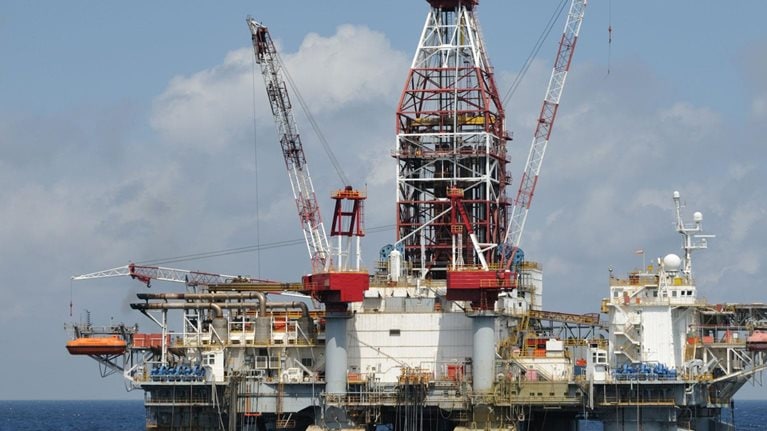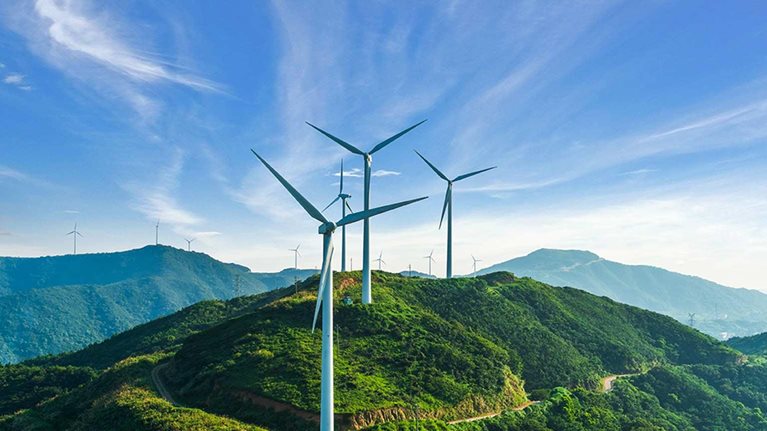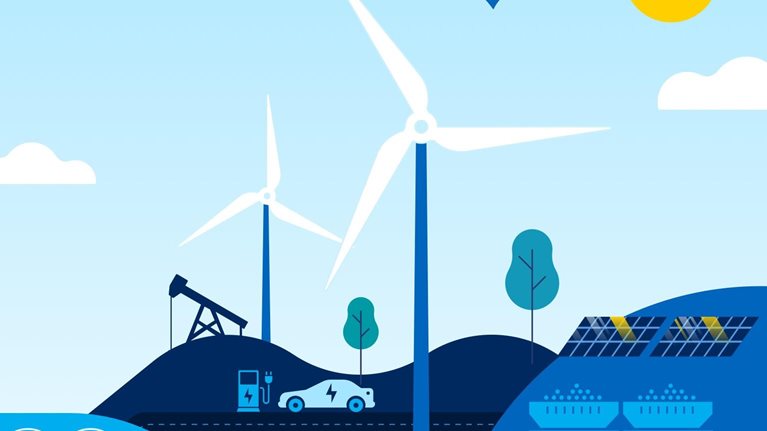Global energy systems trends have an impact on every country’s domestic energy prospects—and Mexico is no exception. A number of factors over the past century, including an unprecedented increase in living standards in the West and rapid industrialization in China, have contributed to the steady rise of global primary energy demand. However, this demand is expected to plateau by 2030 primarily because of the shift to a more service-oriented economy and improved energy efficiency. Furthermore, there will be foundational changes to markets from now to 2050, and the impact of those changes will cascade through every part of the industry and affect all stakeholders, including energy producers, governments, and consumers.
Our research shows that Mexico could become a global energy powerhouse by pursuing the right investments. The country has a diverse set of fossil and nonfossil energy sources, including oil, gas, solar, wind, and geothermal, paired with a low production cost for oil, access to deep gas markets, and a vast potential for the development of renewable energy sources. But the sheer availability of resources does not necessarily translate to cost competitiveness. Mexico’s reliance on fossil fuels has not resulted in lower costs for consumers. In fact, the expenditure per unit of energy for the industrial sector has increased consistently over the past five years.
The transition from fossil fuels to a more diverse set of renewables could increase the economic viability of Mexico’s energy sources. As part of our Mexico energy perspective (see sidebar, “About the research”), which we developed in conjunction with our energy research team, McKinsey Energy Insights, we studied how the country can make strategic investments to achieve its potential as a global energy leader. Shifts in the energy landscape will have profound implications for players across the industry, changing the roles they play as well as the products they offer. These shifts will affect business transformations (as fossil-fuel producers move into new energy types or invest in storage solutions), new market dynamics (as consumer preferences evolve and value chains transform), and government policies and regulations (as new mandates and performance standards affect energy costs).
Our analysis produced three scenarios that model the impact of different factors on Mexico’s overall energy supply and demand, and our findings are grounded in comparisons between these scenarios rather than promoting a specific agenda. The first order of business is for Mexico to create conditions in the next decade to close the sector’s $350 billion investment gap (Exhibit 1). The country currently lags behind the United States in energy supply, cost competitiveness, and government rent.1 Based on current projections, however, the government of Mexico will only be able to cover 50 percent of this gap. Therefore, private player participation is required as well as competition with other countries to attract investors.

The stakes are high, but so are the benefits to the industry and consumers alike. Ultimately, choosing the right path can help Mexico achieve the median global energy expenditure per unit of energy, resulting in savings of $7 billion to $8 billion per year.
Scenarios for Mexico’s energy transition
The energy sector is at a crossroads, and players in Mexico’s energy industry will need to address the coming transition. Our Mexico energy perspective explores the implications of pursuing a cost-efficiency policy and two alternative scenarios.
In the cost-efficiency scenario, the energy sector is focused on minimizing the overall energy cost for the country, which would primarily affect cost competitiveness. The first alternative scenario, however, focuses on local development in which domestic investment and tax revenues are prioritized over cost efficiency. The key tools in this scenario are government rent and supply security. The second alternative scenario focuses on an accelerated case, showing how incremental progress in technology could enable the faster adoption of clean energy.
While each of these three scenarios has key trade-offs that will influence Mexico’s energy matrix in the coming decades, they all share a single message: demand for fossil fuels will eventually peak and be replaced by demand for renewables.
In our cost-efficiency scenario, Mexico’s primary energy demand growth is expected to slow down, given the anticipated progress in energy efficiency and the electrification of critical industries (Exhibit 2). Mexico’s oil demand peaked in 2007, while coal demand peaked in 2011. Subsequently, we expect gas demand in the country to peak sometime around 2032, as calculated by the projected cost competitiveness of solar and wind power. We see new renewables growing at 7 percent per year and replacing fossil fuels faster after 2030.

In our local development scenario, Mexico’s primary energy demand would continue at around 1 percent per year and at a higher cost for the country in the short term. The development of local capacity for oil and gas production and refining—over solar and wind power capacity—enables the demand for fossil fuels to become resilient until the late 2030s—but at a higher cost of energy for consumers. Nonetheless, policies that slow the energy transition will have limited impact in the long term, as the fundamental economics of renewables eventually prevail regardless of short-term decisions.
Finally, the accelerated transition scenario, the most radical scenario, allows for faster clean energy adoption and aggressive emissions reduction. This scenario assumes that technological and cost breakthroughs would allow Mexico to reduce its overall energy demand by 7 percent, as compared with our cost-efficiency scenario, and that demand for domestic fossil fuels would peak as soon as 2020. For this scenario to materialize, we would need to observe efficiency trends accelerating both globally and locally.
Implications for the Mexican energy sector
Renewables have a privileged cost position that will prevail under any scenario. Therefore, Mexico can become a global leader in clean energy and help cut electricity costs for the industry in half by 2050.
To supply electricity at the most competitive cost, Mexico has two choices: emphasize the gasification of power or promote the faster adoption of renewable technologies. Based on the numbers alone, our Mexico energy perspective reference case reaches an obvious conclusion—pursue solar and wind renewable investments (Exhibit 3).

Doing so, however, would imply renewables generate more than 75 percent of the power required throughout the country by 2050 (Exhibit 4). Regulatory certainty, storage solutions, and investments would be needed to keep up with rapidly expanding electrification. Furthermore, an increased reliance on renewables could result in gas shifting from the primary source of power generation to a source of energy flexibility as wind and solar become the lowest-cost supply for electricity.

New generation capacity of both solar and wind power is already more competitive than gas and coal by a significant margin and will increase its attractiveness as energy storage solutions become prevalent. This trend was confirmed by last year’s long-term auctions. Furthermore, we predict the cost of firm solar generation and load profiles (including the cost of batteries for its backup) will be competitive in 2026. If the energy policy does not encourage new clean-energy auctions, however, gas could remain the primary source of electricity until at least 2040.
In either case, the energy transition implies that electricity players will need to double down on efficiency, digitalization, innovation, and scale to sustain profitability in a more cost-competitive environment. Regulatory certainty will therefore be the critical enabler for this transition.
Gas demand will gradually decline after 2032
Mexico is one of the world’s largest gas consumers and importers. And while the country currently consumes more natural gas than it produces, it benefits from access to some of the world’s cheapest gas imports from Texas, in addition to one of the world’s largest unconventional gas reserves. Mexico could invest in both sources to lower the cost of energy. In either case, the sector requires incentives for infrastructure development and supply-chain optimization.
In terms of cost, our Mexico energy perspective indicates that gas imports represent the most attractive development option. Correctly prioritizing gas infrastructure and compression capacity could lower gas prices by approximately 30 percent from the current baseline. Our local development scenario shows an expected cost difference of approximately $4.8 billion per year for consumers. Developing local, unconventional reserves, while more expensive, would have indirect economic effects—such as additional tax revenues and job growth—that could partly compensate for the imports price difference. That said, the development of unconventional reserves cannot be driven by gas alone but would substantially rely on the availability of liquid hydrocarbons.
Both strategies will have important consequences for electricity and industrial players. Additional gas infrastructure could enable new regions to benefit from competitive gas prices and boost industry competitiveness as well as create opportunities for exporting liquefied natural gas. In addition, developing shale gas could significantly boost the economy, but for that to happen, producers require an optimized supply chain and proper access to land or water resources, which is not readily available today.
Mexico should accelerate the development of the upstream sector
Despite stable historic growth of more than 1 percent per year, global oil demand growth is widely projected to slow, eventually peaking around 2033. Furthermore, our accelerated scenario estimates an equilibrium price of $40 to $50 per barrel. This level would place Mexico at risk of a fiscal deficit, as nearly 30 percent of the country’s assets would not be economically viable without further cost optimization or schedule acceleration before 2030.
Investment requirements in that time include all energy sectors and total nearly $350 billion. However, the sector that requires the largest investment is upstream oil and gas, at $73 billion to $162 billion.

Global Energy Perspective 2019
To manage the risks and opportunities of the energy transition, the country needs a clear strategy to lower full-cycle break-even costs or accelerate the development of assets at risk. Producers will need to redefine their portfolios and harness new technologies (for example, digital reservoir analysis and drilling standardization) as well as industry collaboration (such as prefabrication or modular construction) to improve efficiency and accelerate development of its core fields. Meanwhile, the government would have to define incentives and mechanisms to ensure the development of its reserves before peak oil.
Enabling these opportunities will have significant consequences for Mexico’s oil production, the country’s fiscal stability, and the profitability of its oil players over the next decade.
Supply of liquid fuels requires upgrades to facilities and midstream infrastructure
A new investment strategy to provide fuels competitively in Mexico will become more urgent than ever as the demand for Mexico’s oil products flattens in the coming years. Our Mexico energy perspective reference case shows that peak demand for fuels in Mexico will be largely shaped by efficiencies and the electrification of industrial sectors—and will fully materialize as electric vehicles reach cost parity. In particular, the reference case shows that electric vehicles in the country will start reaching cost parity with internal-combustion-engine vehicles in the next decade, but mass adoption will not fully materialize until after 2030 (Exhibit 5).

As demand stabilizes, additional refining capacity may not be needed (Exhibit 6). In fact, Mexico’s current refining capacity could satisfy approximately 70 to 80 percent of light fuels, such as gasoline and diesel. Existing refineries could reduce the supply gap for light products by improving operational efficiency to previous levels.

To close the remaining light products gap, Mexico has two options: increase the country’s refining capacity or optimize imports infrastructure and costs of imports from the US Gulf Coast.
Even if the construction of new capacity stayed on budget and attained top operational excellence, our base case shows that the payback period for a new refinery in Mexico would extend to 2038. That said, the latter option of optimizing the cost of imports from the United States through investments in infrastructure—which can be accomplished by building fuel storage tanks, reducing fuel transport by truck, or buying existing capacity in the United States—is optimal by a wide margin because greenfield refining in Mexico would not be able to compete with benchmark refineries on the Gulf Coast.
Defining an effective, comprehensive downstream investment strategy that reflects new mobility trends will have significant consequences for petroleum companies in Mexico, whether they are state owned or not, as well as for fuel-intensive consumers, such as airlines. In addition, a robust investment strategy to develop adequate operations and infrastructure for fuels can yield lower overall energy costs for the industry as well as profitable investment opportunities.
Electrification, efficiency, and optimized fuel sourcing can cut the industrial sector’s energy expenditures by 20 percent
While it’s true that the slowdown of energy demand growth after 2030 will happen across nearly all industries in Mexico, including cement and metals, agriculture, food, mining, and manufacturing, among others, overall demand will remain significant for at least the next decade.
For now, companies across sectors worldwide are using energy transition technologies to reduce base-operating costs—and Mexico is no exception. Overall, industries have already seen significant energy cost reduction by embracing multiple trends, such as digitalization and automation, improved supplier collaboration, and smart energy sourcing (direct usage of renewables). For example, the steel industry has made moves to integrate upstream suppliers, switch to electric arc furnaces, and refine downstream processing. Chemical and pharmaceutical companies have pursued batch and continuous processing.
Players in the industrials sector will need to redefine their energy operations across the value chain, especially as it relates to equipment electrification (especially in low-heat operations), gas sourcing, electricity load forecasting, and the implementation of energy-efficiency solutions. Similarly, the public sector will need to provide the right investment conditions.
Energy systems touch nearly every aspect of our lives, providing power for our cars, our phones, and our homes. It’s of the utmost importance that the industry stays abreast of a changing energy landscape in the decades to come. Mexico is no exception. Industry and government leaders will need to make the right moves to meet increasing demand while keeping costs low. In this regard, there is much work that remains to be done. And it’s our hope that the numbers presented here can help demonstrate a path toward a cleaner, more efficient energy matrix.


